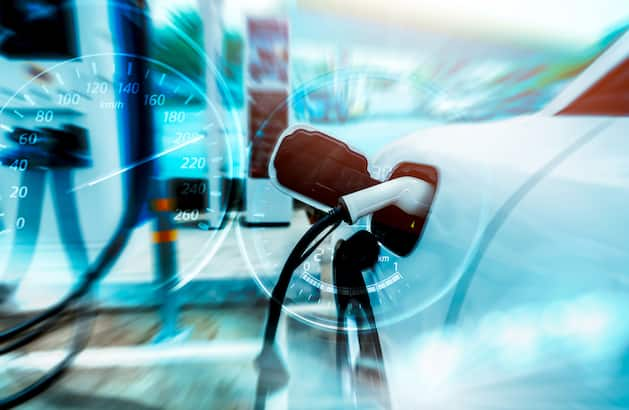15 million electric cars are expected to be driving in Germany by 2030. This requires tens of thousands of tons of previously rare metals such as lithium and cobalt. The supply of this is far from guaranteed and could become the bottleneck.
The federal government’s electric car plans are ambitious. From today’s around one million electric cars on German roads, the figure is set to rise to 15 million – in just seven years. Even then, the proportion of e-cars would only be around 22 percent, so it would have to increase further in the years to come in order for combustion engines to be completely replaced at some point. But even the 2030 target has it all. The construction of 15 million electric cars requires materials that are not used in previous car production processes. The main focus is on metals that are important for battery production, such as lithium and cobalt.
In an internal paper quoted by the FAZ, the Federal Ministry of Transport has now calculated the quantities of these raw materials required for the German traffic turnaround. The starting point is a fictitious, average electric car with a battery of 60 KWh and an electric motor with an output of 150 KW, which corresponds to around 204 hp. VW, for example, already offers this equipment in the cheapest model of its ID.3 electric car.
Today, around six kilograms of lithium and eight kilograms of cobalt are installed in each car. Extrapolated to 15 million cars, this would result in a requirement of 90,000 tons of lithium and 120,000 tons of cobalt. That doesn’t sound like much at first, because the global production of lithium in 2022 was an estimated 128,000 tons. Even 176,000 tons of cobalt were mined.
But: Germany is not the only country in the world that wants to build more and more batteries for electric cars. And electric cars are not the only product that requires batteries made of lithium and cobalt. For example, the Australian Government’s Department of Industry, Science, Energy and Resources (DISER) estimates that supply and demand will grow roughly evenly over the coming years, with demand for lithium always slightly exceeding supply. In 2025, this should already happen at a level of up to 190,000 tons of lithium per year.
Last summer, the Federal Institute for Geosciences and Natural Resources (BGR) even estimated in internal calculations quoted by the Handelsblatt that by 2030 there will be an ever-increasing gap between production and demand. In the best case, this would be 90,000 tons per year at the end of the decade, in the worst case 300,000 tons. That would be a multiple of today’s annual production.
Cobalt and nickel, two other important raw materials for electric car batteries, present other problems. Cobalt, for example, is largely mined in Congo today, where human rights and labor rights often don’t count for much. In addition to unsecured mines, this is a problem because cobalt is poisonous and requires appropriately trained handling. Nickel, on the other hand, comes largely from Russia – which is not easy geopolitically at the moment.
But these problems can be solved. Since everyone involved is aware of their existence, there are several approaches – for example:
Supply and demand for lithium could balance out by 2030, which will repeatedly lead to supply bottlenecks. In the long term, however, we hardly have a problem with the lithium supply. The worldwide known deposits are estimated at 21 million tons. This would make it possible to build 3.5 billion electric cars of the ID.3 type – far more than the world will ever need. However, it will take time to tap into all of these reserves. “The tense lithium situation will resolve itself over time,” Haresh Kamath of the Electric Power Research Institute in Palo Alto, USA, told Nature magazine. Scientists are also working on more environmentally friendly mining methods. The extraction methods used in Chile, for example, which are often criticized today because they are very water-intensive, should be passé in a few years.
Six kilograms of lithium and eight kilograms of cobalt per electric car battery are the current state of the art. It shouldn’t go on like this. Cobalt-free batteries already achieve the same performance, at least in the laboratory. US pioneer Tesla wants to make this technology ready for series production in just a few years. Equally keenly researched on low-lithium batteries. Lithium cannot be completely eliminated. The properties of the metal are too perfect for powerful batteries. Next, research will be intensified to also minimize the need for nickel. Theoretically, this metal could also be completely removed from batteries.
An old electric car battery already doesn’t end up in the landfill. The substances they contain are too valuable to simply throw away. But: Nowadays it is mainly the extraction of cobalt that makes recycling profitable. So far, lithium has been cheaper to mine than to recycle. So that cobalt-free batteries can also be recycled in the future, scientists are working on improving the recycling processes. China’s largest battery producer CATL already recycles 120,000 tons of electric car batteries per year. The raw materials obtained are sufficient for the batteries of 200,000 new cars. This is a good start, but still needs to be improved significantly.
China supports recycling with high investments, and the USA also spends a lot of money on research. In December, the EU passed a recycling guideline that provides for annually increasing recycling quotas from 2024.
Follow the author on Facebook
Follow the author on Twitter
On our e-mobility portal EFAHRER.com you will find all e-vehicles available on the German market
You can also arrange a test drive for the car of your choice free of charge and thus start e-mobility in an uncomplicated manner.















